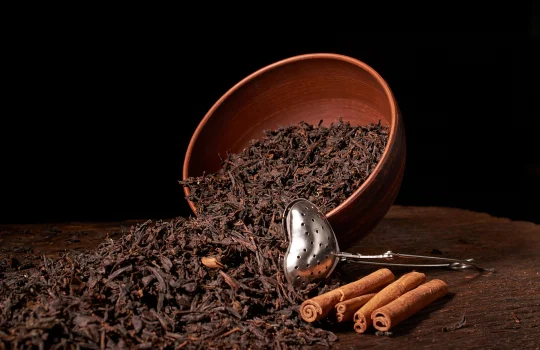Identifying Green Tea
Green tea refers to tea made from the young leaves of tea plants that have not undergone fermentation, but instead undergo processes such as killing the green, rolling, and drying. The tea liquor retains the fresh green hue of the leaves, with a colour that is predominantly emerald green.
1. Appearance
There are many types of green tea, and their appearances naturally vary greatly. Generally, high-quality eyebrow tea is green with a silver-grey sheen, uniform in shape, heavy and robust with buds, neat and smooth; pearl tea is deep green with a black sheen, tightly rolled into pellets, with round, pearl-like shapes being the finest; pan-fired tea is green with a hint of yellow, while melon-shaped tea is emerald green; Mao Feng tea is tightly rolled with abundant white downy hairs being the finest, while pan-fired tea is vibrant green and lustrous; Steamed green tea has a compact, heavy appearance, uniform size, intact bud tips, even colour, and a deep green hue with a lustrous sheen, which are considered top-quality characteristics.
If green tea is of inferior quality, such as substandard Mei tea, its leaves are often loose and flat, curved, light and airy, with a yellowish or dull colour. If Mao Feng tea has coarse, loose leaves, a loose texture, and few white hairs, it is also considered substandard.
2. Aroma
High-quality green teas all have the characteristic of a delicate and lasting aroma. For example, Zhu tea has a lasting fragrance; steamed green tea has a fresh aroma with a unique seaweed-like scent; Tun green tea has a lasting chestnut aroma; Shu green tea has a strong floral fragrance; and Shi green tea has a sharp, delicate aroma. Clearly, different green teas have their own distinct characteristics.
Teas with smoky, sour, fermented, grassy, or other off-flavours are considered inferior.
3. Tea liquor colour
High-quality green teas have a clear and bright tea liquor colour. For example, Mei tea and Zhu tea have a clear yellow-green, transparent tea liquor; steamed green tea has a pale yellow-green, clear and bright tea liquor. However, green teas with a deep yellow, cloudy, or reddish infusion colour are often inferior.
4. Taste
After brewing, high-quality green teas have a rich and refreshing taste. For example, Mei tea is rich, pure, and refreshing; Zhu tea is rich with a sweet aftertaste; and steamed green tea has a fresh and crisp taste. Green teas with a weak, coarse, or astringent taste, or those with an old green taste or other off-flavours, are considered inferior.
5. Leaf Base
The leaf base of high-quality green tea is typically bright, tender, and soft in texture, with white downy hairs on the underside of the leaves.
Teas with a coarse, tough, or dark green leaf base are often considered inferior. Green tea offers significant health benefits. Regular consumption can help prevent cancer and radiation exposure, lower blood lipid levels, and reduce nicotine content in smokers’ bodies, earning it the title of the body’s ‘cleansing agent.’ Given its high value, many people seek to purchase it, leading to numerous unscrupulous merchants who frequently produce counterfeit products to reap excessive profits. Only by mastering the methods to distinguish genuine green tea can one select the highest quality tea that suits one’s preferences.




